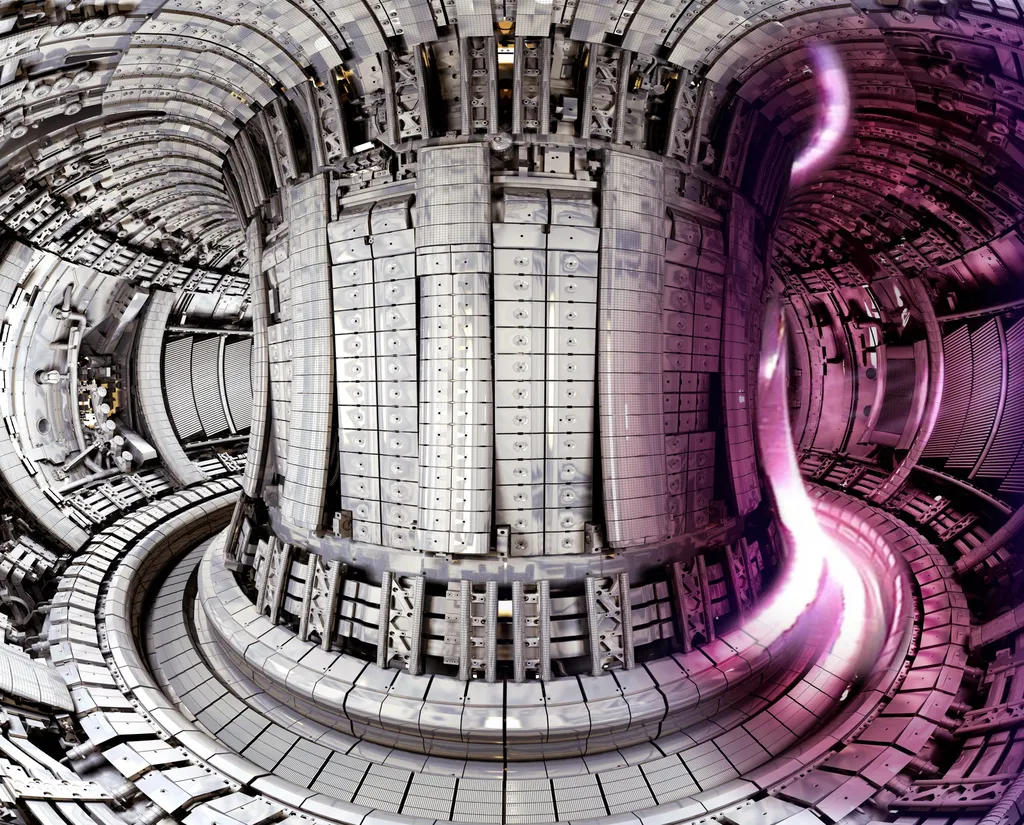In the quest to harness fusion energy, scientists are delving deeper into the intricate physics governing plasma behavior, particularly in the challenging edge regions of tokamak reactors. A recent study published in the journal *Nuclear Fusion*, titled “Advances in understanding the impact of isotope mass on pedestal structure and transport,” sheds light on how different hydrogen isotopes affect plasma performance, with significant implications for future fusion reactors like ITER.
The research, led by Costanza Maggi from the United Kingdom Atomic Energy Authority (UKAEA) at Culham Campus, focuses on the H-mode pedestal, a critical region at the edge of the plasma where steep gradients in density and temperature occur. Understanding and controlling this region is pivotal for achieving the burning plasma conditions necessary for sustainable fusion energy.
“Our experiments on JET have provided unique insights into how the mass of hydrogen isotopes influences the pedestal structure and transport,” Maggi explained. The study involved conducting experiments with deuterium (D) and deuterium-tritium (D–T) plasmas, the fuel mix planned for ITER and future fusion reactors. The findings confirm a strong dependence of pedestal density on isotope mass, a factor that could significantly impact the performance of future reactors.
The research employed state-of-the-art diagnostics to measure pedestal structure in D, D–T, and tritium (T) plasmas. Advanced theoretical models were used to identify the underlying physics mechanisms. The study found that changes in pedestal stability and inter-ELM (Edge Localized Mode) transport with isotope mass are crucial for explaining the observed dependencies of pedestal density and temperature.
One of the key challenges highlighted in the study is the difficulty in obtaining accurate measurements of the edge particle source, which hampers progress in this area. However, the research also quantified the competing levels of turbulent and neoclassical transport using the gyrokinetic code GENE for selected JET pedestals. This work provides a deeper understanding of how isotope mass affects plasma behavior.
Looking ahead, the study suggests that in future D–T H-modes, the impact of isotope mass dependence on edge neutral fuelling will be negligible. Instead, the pedestal density structure will primarily depend on its transport properties, which in turn will influence pedestal stability. This insight is crucial for designing and operating future fusion reactors efficiently.
The findings from this research are not just academic; they have real-world implications for the energy sector. As fusion energy moves closer to commercialization, understanding these intricate details will be essential for optimizing reactor performance and ensuring the viability of fusion as a clean, sustainable energy source.
Maggi’s work, published in the journal *Nuclear Fusion* (which translates to *Fusion Energy* in English), represents a significant step forward in the field. By unraveling the complexities of isotope mass effects on plasma transport, this research paves the way for more informed design and operation of future fusion reactors, bringing us closer to the realization of fusion energy’s promise.

